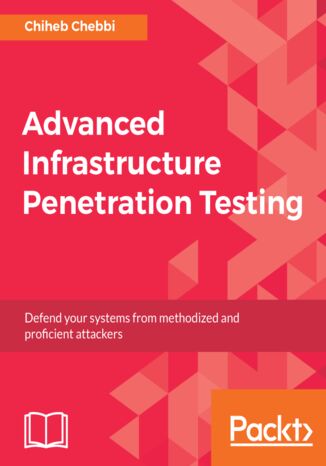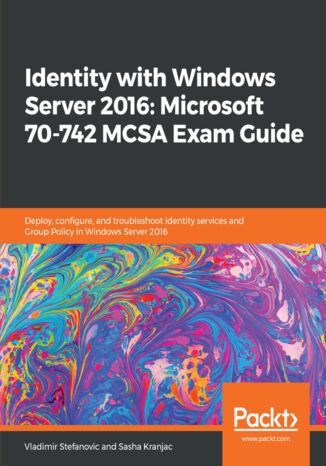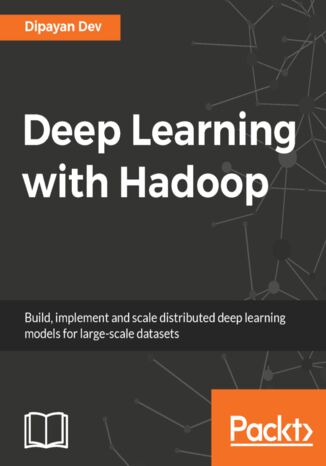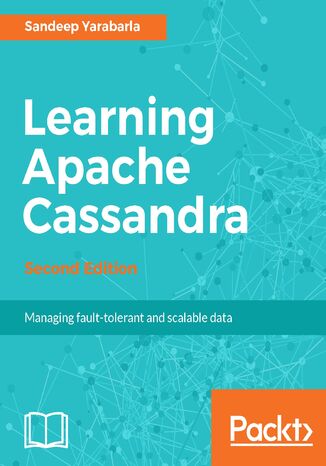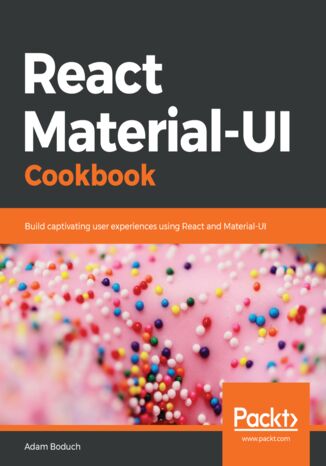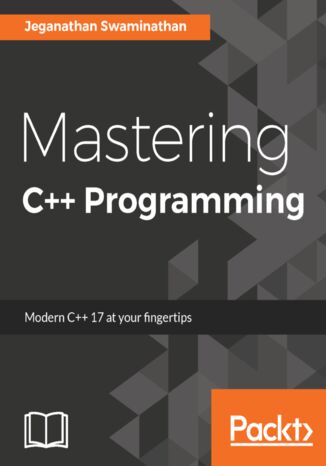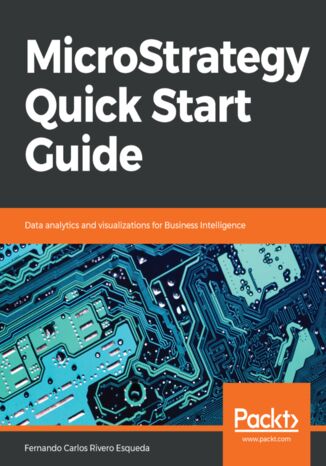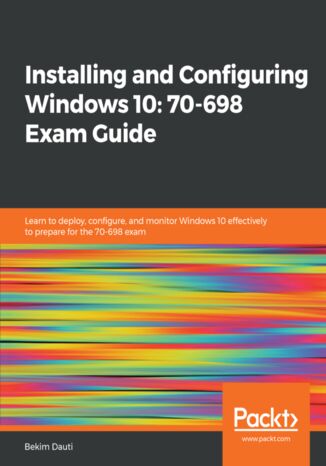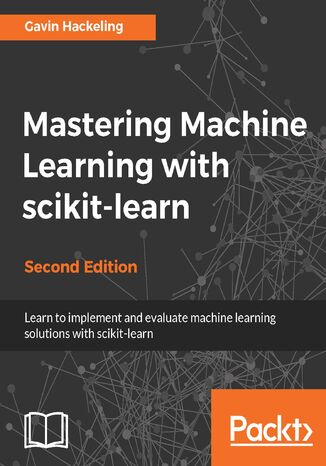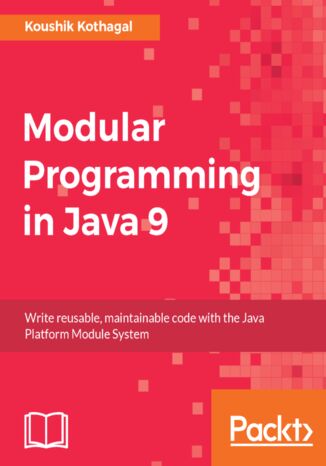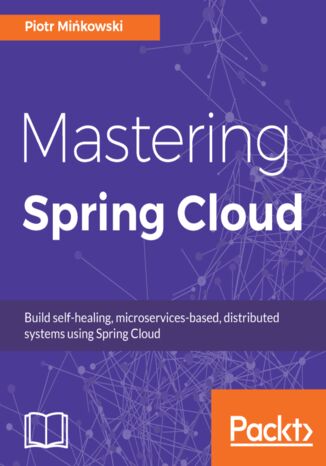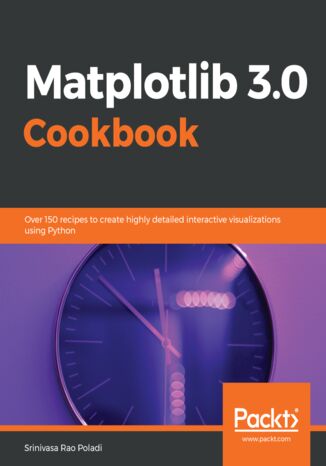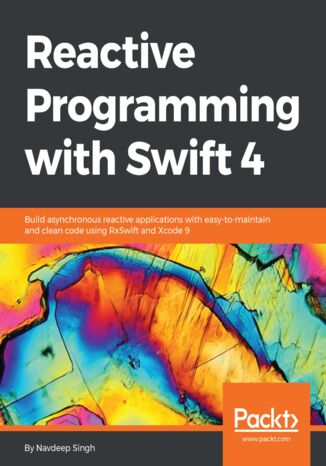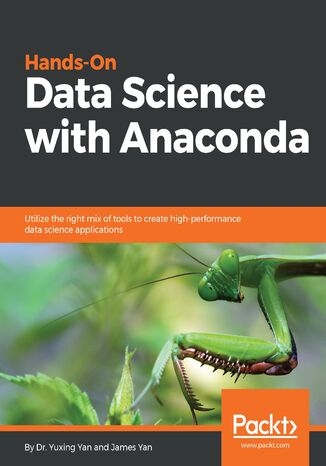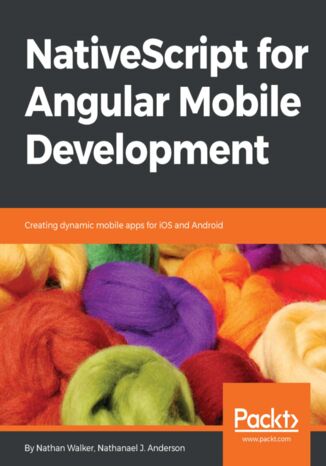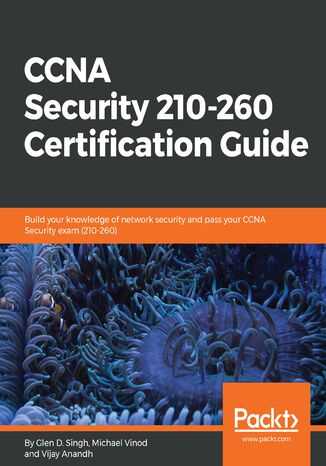Categories
-
- Bitcoin
- Businesswoman
- Coaching
- Controlling
- E-business
- Economy
- Finances
- Stocks and investments
- Personal competence
- Computer in the office
- Communication and negotiation
- Small company
- Marketing
- Motivation
- Multimedia trainings
- Real estate
- Persuasion and NLP
- Taxes
- Social policy
- Guides
- Presentations
- Leadership
- Public Relation
- Reports, analyses
- Secret
- Social Media
- Sales
- Start-up
- Your career
- Management
- Project management
- Human Resources
-
- Architektura i wnętrza
- Health and Safety
- Biznes i Ekonomia
- Home and garden
- E-business
- Ekonomia i finanse
- Esoterecism
- Finances
- Personal finance
- Business
- Photography
- Computer science
- HR & Payroll
- For women
- Computers, Excel
- Accounts
- Culture and literature
- Scientific and academic
- Environmental protection
- Opinion-forming
- Education
- Taxes
- Travelling
- Psychology
- Religion
- Agriculture
- Book and press market
- Transport and Spedition
- Healthand beauty
-
- Office applications
- Data bases
- Bioinformatics
- IT business
- CAD/CAM
- Digital Lifestyle
- DTP
- Electronics
- Digital photography
- Computer graphics
- Games
- Hacking
- Hardware
- IT w ekonomii
- Scientific software package
- School textbooks
- Computer basics
- Programming
- Mobile programming
- Internet servers
- Computer networks
- Start-up
- Operational systems
- Artificial intelligence
- Technology for children
- Webmastering
-
- Antology
- Ballade
- Biographies and autobiographies
- For adults
- Dramas
- Diaries, memoirs, letters
- Epic, epopee
- Essay
- Fantasy and science fiction
- Feuilletons
- Work of fiction
- Humour and satire
- Other
- Classical
- Crime fiction
- Non-fiction
- Fiction
- Mity i legendy
- Nobelists
- Novellas
- Moral
- Okultyzm i magia
- Short stories
- Memoirs
- Travelling
- Narrative poetry
- Poetry
- Politics
- Popular science
- Novel
- Historical novel
- Prose
- Adventure
- Journalism, publicism
- Reportage novels
- Romans i literatura obyczajowa
- Sensational
- Thriller, Horror
- Interviews and memoirs
-
- Archeology
- Bibliotekoznawstwo
- Cinema studies
- Philology
- Polish philology
- Philosophy
- Finanse i bankowość
- Geography
- Economy
- Trade. World economy
- History and archeology
- History of art and architecture
- Cultural studies
- Linguistics
- Literary studies
- Logistics
- Maths
- Medicine
- Humanities
- Pedagogy
- Educational aids
- Popular science
- Other
- Psychology
- Sociology
- Theatre studies
- Theology
- Economic theories and teachings
- Transport i spedycja
- Physical education
- Zarządzanie i marketing
-
- Health and Safety
- History
- Road Code. Driving license
- Law studies
- Healthcare
- General. Compendium of knowledge
- Academic textbooks
- Other
- Construction and local law
- Civil law
- Financial law
- Economic law
- Economic and trade law
- Criminal law
- Criminal law. Criminal offenses. Criminology
- International law
- International law
- Health care law
- Educational law
- Tax law
- Labor and social security law
- Public, constitutional and administrative law
- Family and Guardianship Code
- agricultural law
- Social law, labour law
- European Union law
- Industry
- Agricultural and environmental
- Dictionaries and encyclopedia
- Public procurement
- Management
-
- Africa
- Albums
- Southern America
- North and Central America
- Australia, New Zealand, Oceania
- Austria
- Asia
- Balkans
- Middle East
- Bulgary
- China
- Croatia
- The Czech Republic
- Denmark
- Egipt
- Estonia
- Europe
- France
- Mountains
- Greece
- Spain
- Holand
- Iceland
- Lithuania
- Latvia
- Mapy, Plany miast, Atlasy
- Mini travel guides
- Germany
- Norway
- Active travelling
- Poland
- Portugal
- Other
- Przewodniki po hotelach i restauracjach
- Russia
- Romania
- Slovakia
- Slovenia
- Switzerland
- Sweden
- World
- Turkey
- Ukraine
- Hungary
- Great Britain
- Italy
-
- Philosophy of life
- Kompetencje psychospołeczne
- Interpersonal communication
- Mindfulness
- General
- Persuasion and NLP
- Academic psychology
- Psychology of soul and mind
- Work psychology
- Relacje i związki
- Parenting and children psychology
- Problem solving
- Intellectual growth
- Secret
- Sexapeal
- Seduction
- Appearance and image
- Philosophy of life
-
- Bitcoin
- Businesswoman
- Coaching
- Controlling
- E-business
- Economy
- Finances
- Stocks and investments
- Personal competence
- Communication and negotiation
- Small company
- Marketing
- Motivation
- Real estate
- Persuasion and NLP
- Taxes
- Social policy
- Guides
- Presentations
- Leadership
- Public Relation
- Secret
- Social Media
- Sales
- Start-up
- Your career
- Management
- Project management
- Human Resources
-
- Antology
- Ballade
- Biographies and autobiographies
- For adults
- Dramas
- Diaries, memoirs, letters
- Epic, epopee
- Essay
- Fantasy and science fiction
- Feuilletons
- Work of fiction
- Humour and satire
- Other
- Classical
- Crime fiction
- Non-fiction
- Fiction
- Mity i legendy
- Nobelists
- Novellas
- Moral
- Okultyzm i magia
- Short stories
- Memoirs
- Travelling
- Poetry
- Politics
- Popular science
- Novel
- Historical novel
- Prose
- Adventure
- Journalism, publicism
- Reportage novels
- Romans i literatura obyczajowa
- Sensational
- Thriller, Horror
- Interviews and memoirs
-
- Philosophy of life
- Interpersonal communication
- Mindfulness
- General
- Persuasion and NLP
- Academic psychology
- Psychology of soul and mind
- Work psychology
- Relacje i związki
- Parenting and children psychology
- Problem solving
- Intellectual growth
- Secret
- Sexapeal
- Seduction
- Appearance and image
- Philosophy of life
It has always been difficult to gain hands-on experience and a comprehensive understanding of advanced penetration testing techniques and vulnerability assessment and management. This book will be your one-stop solution to compromising complex network devices and modern operating systems. This book provides you with advanced penetration testing techniques that will help you exploit databases, web and application servers, switches or routers, Docker, VLAN, VoIP, and VPN.With this book, you will explore exploitation abilities such as offensive PowerShell tools and techniques, CI servers, database exploitation, Active Directory delegation, kernel exploits, cron jobs, VLAN hopping, and Docker breakouts. Moving on, this book will not only walk you through managing vulnerabilities, but will also teach you how to ensure endpoint protection. Toward the end of this book, you will also discover post-exploitation tips, tools, and methodologies to help your organization build an intelligent security system.By the end of this book, you will have mastered the skills and methodologies needed to breach infrastructures and provide complete endpoint protection for your system.
Vladimir Stefanovic, Sasha Kranjac
MCSA: Windows Server 2016 certification is one of the most sought-after certifications for IT professionals, which includes working with Windows Server and performing administrative tasks around it. This book is aimed at the 70-742 certification and is part of Packt's three-book series on MCSA Windows Server 2016 certification, which covers Exam 70-740, Exam 70-741, and Exam 70-742.This exam guide covers the exam objectives for the 70-742 Identity with Windows Server 2016 exam. It starts with installing and configuring Active Directory Domain Services (AD DS), managing and maintaining AD DS objects and advanced configurations, configuring Group Policy, Active Directory Certificate Services, and Active Directory Federation Services and Rights Management. At the end of each chapter, convenient test questions will help you in preparing for the certification in a practical manner.By the end of this book, you will be able to develop the knowledge and skills needed to complete MCSA Exam 70-742: Identity with Windows Server 2016 with confidence.
Deep Learning with Hadoop. Distributed Deep Learning with Large-Scale Data
This book will teach you how to deploylarge-scale dataset in deep neural networks with Hadoop foroptimal performance.Starting with understanding what deeplearning is, and what the various modelsassociated with deep neural networks are, thisbook will then show you how to set up theHadoop environment for deep learning.In this book, you will also learn how toovercome the challenges that you facewhile implementing distributed deeplearning with large-scale unstructured datasets. The book willalso show you how you can implementand parallelize the widely used deep learning models such as Deep Belief Networks,Convolutional Neural Networks, Recurrent Neural Networks, Restricted Boltzmann machines and autoencoder using the popular deep learning library Deeplearning4j.Get in-depth mathematical explanationsand visual representations to helpyou understand the design and implementationsof Recurrent Neural network and Denoising Autoencoders withDeeplearning4j. To give you a morepractical perspective, the book will alsoteach you the implementation of large-scale video processing, image processing andnatural language processing on Hadoop.By the end of this book, you willknow how to deploy various deep neural networks indistributed systems using Hadoop.
Cassandra is a distributed database that stands out thanks to its robust feature set and intuitive interface, while providing high availability and scalability of a distributed data store. This book will introduce you to the rich feature set offered by Cassandra, and empower you to create and manage a highly scalable, performant and fault-tolerant database layer.The book starts by explaining the new features implemented in Cassandra 3.x and get you set up with Cassandra. Then you’ll walk through data modeling in Cassandra and the rich feature set available to design a flexible schema. Next you’ll learn to create tables with composite partition keys, collections and user-defined types and get to know different methods to avoid denormalization of data. You will then proceed to create user-defined functions and aggregates in Cassandra. Then, you will set up a multi node cluster and see how the dynamics of Cassandra change with it. Finally, you will implement some application-level optimizations using a Java client.By the end of this book, you'll be fully equipped to build powerful, scalable Cassandra database layers for your applications.
React Material-UI Cookbook. Build captivating user experiences using React and Material-UI
Material-UI is a component library for rendering UI elements, using modern best practices from React and Material Design. This book will show you how you can create impressive and captivating modern-day web apps by implementing Material Design considerations. The book is designed to help you use a variety of Material-UI components to enhance UI functionality, along with guiding you through React best practices, and using state, context, and other new React 16.8 features.You will start with layout and navigation, exploring the Grid component and understanding how it’s used to build layouts for your Material-UI apps. Using Material-UI components, you’ll then explore the technique of effectively presenting information. In later sections, you will also learn about the different components for user interactions such as the text input component and buttons. Finally, the book will get you up to speed with customizing the look and feel of your app, right from creating a Material-UI theme through to styling icons and text.By the end of this book, you will have developed the skills you need to improve the look and feel of your applications using Material-UI components.
Mastering C++ Programming. Modern C++ 17 at your fingertips
C++ ? ?has ? ?come ? ?a ? ?long ? ?way ? ?and ? ?has ? ?now ? ?been ? ?adopted ? ?in ? ?several ? ?contexts. Its ? ?key ? ?strengths ? ?are ? ?its ? ?software ? ?infrastructure ? ?and ? ?resource-constrained applications. ? ?The ?C++ ? ?17 ? ?release ? ?will ? ?change ? ?the ? ?way ? ?developers ? ?write code, ? ?and ? ?this ? ?book ? ?will ? ?help ?you ? ?master ? ?your ? ?developing ? ?skills ? ?with ? ?C++. With ? ?real-world, ? ?practical ? ?examples ? ?explaining ? ?each ? ?concept, ? ?the ? ?book ? ?will begin ? ?by ? ?introducing ? ?you ? ?to ? ?the ? ?latest ? ?features ? ?in ? ?C++ ? ?17. ? ?It ? ?encourages clean ? ?code ? ?practices ? ?in ? ?C++ ? ?in ? ?general, ? ?and ? ?demonstrates ? ?the ? ?GUI app-development ? ?options ? ?in ? ?C++. ? ?You’ll ? ?get ? ?tips ? ?on ? ?avoiding ? ?memory ? ?leaks using ? ?smart-pointers. ? ?Next, ? ?you’ll ? ?see ? ?how ? ?multi-threaded ?programming can ? ?help ? ?you ? ?achieve ? ?concurrency ? ?in ? ?your ? ?applications. Moving ? ?on, ? ?you’ll ? ?get ? ?an ? ?in-depth ? ?understanding ? ?of ? ?the ? ?C++ ? ?Standard Template ? ?Library. ? ?We ? ?show ? ?you ? ?the ? ?concepts ? ?of ? ?implementing ? ?TDD ? ?and BDD ? ?in ? ?your ? ?C++ ? ?programs, ? ?and ? ?explore ? ?template-based ? ?generic programming, ? ?giving ? ?you ? ?the ? ?expertise ? ?to ? ?build ? ?powerful ? ?applications. Finally, ? ?we’ll ? ?round ? ?up ? ?with ? ?debugging ? ?techniques ? ?and ? ?best ? ?practices.By ? ?the ? ?end ? ?of ? ?the ? ?book, ? ?you’ll ? ?have ? ?an ? ?in-depth ? ?understanding ? ?of ? ?the language ? ?and ? ?its ? ?various ? ?facets.
MicroStrategy Quick Start Guide. Data analytics and visualizations for Business Intelligence
Fernando Carlos Rivero Esqueda
MicroStrategy is an enterprise business intelligence application. It turns data into reports for making and executing key organization decisions. This book shows you how to implement Business Intelligence (BI) with MicroStrategy. It takes you from setting up and configuring MicroStrategy to security and administration.The book starts by detailing the different components of the MicroStrategy platform, and the key concepts of Metadata and Project Source. You will then install and configure MicroStrategy and lay down the foundations for building MicroStrategy BI solutions. By learning about objects and different object types, you will develop a strong understanding of the MicroStrategy Schema and Public Objects. With these MicroStrategy objects, you will enhance and scale your BI and Analytics solutions.Finally, you will learn about the administration, security, and monitoring of your BI solution.
The Installing and Configuring Windows 10: 70-698 Exam Guide is designed to confirm what you already know, while also updating your knowledge of Windows 10. With its easy-to-follow guidance, you will quickly learn the user interface and discover steps to work efficiently in Windows 10 to rule out delays and obstacles.This book begins by covering various ways of installing Windows 10, followed by instructions on post-installation tasks. You will learn about the deployment of Windows 10 in Enterprise and also see how to configure networking in Windows 10. You’ll understand how to leverage Disk Management and Windows PowerShell to configure disks, volumes, and file system options. As you progress through the chapters, you will be able to set up remote management in Windows 10 and learn more about Windows update usage, behavior, and settings. You will also gain insights that will help you monitor and manage data recovery and explore how to configure authentication, authorization, and advanced management tools in Windows 10.By the end of this book, you will be equipped with enough knowledge to take the 70-698 exam and explore different study methods to improve your chances of passing the exam with ease.
Machine learning is the buzzword bringing computer science and statistics together to build smart and efficient models. Using powerful algorithms and techniques offered by machine learning you can automate any analytical model.This book examines a variety of machine learning models including popular machine learning algorithms such as k-nearest neighbors, logistic regression, naive Bayes, k-means, decision trees, and artificial neural networks. It discusses data preprocessing, hyperparameter optimization, and ensemble methods. You will build systems that classify documents, recognize images, detect ads, and more. You will learn to use scikit-learn’s API to extract features from categorical variables, text and images; evaluate model performance, and develop an intuition for how to improve your model’s performance.By the end of this book, you will master all required concepts of scikit-learn to build efficient models at work to carry out advanced tasks with the practical approach.
The Java 9 module system is an important addition to the language that affects the way we design, write, and organize code and libraries in Java. It provides a new way to achieve maintainable code by the encapsulation of Java types, as well as a way to write better libraries that have clear interfaces. Effectively using the module system requires an understanding of how modules work and what the best practices of creating modules are.This book will give you step-by-step instructions to create new modules as well as migrate code from earlier versions of Java to the Java 9 module system. You'll be working on a fully modular sample application and add features to it as you learn about Java modules. You'll learn how to create module definitions, setup inter-module dependencies, and use the built-in modules from the modular JDK. You will also learn about module resolution and how to use jlink to generate custom runtime images.We will end our journey by taking a look at the road ahead. You will learn some powerful best practices that will help you as you start building modular applications. You will also learn how to upgrade an existing Java 8 codebase to Java 9, handle issues with libraries, and how to test Java 9 applications.
Developing, deploying, and operating cloud applications should be as easy as local applications. This should be the governing principle behind any cloud platform, library, or tool. Spring Cloud–an open-source library–makes it easy to develop JVM applications for the cloud. In this book, you will be introduced to Spring Cloud and will master its features from the application developer's point of view. This book begins by introducing you to microservices for Spring and the available feature set in Spring Cloud. You will learn to configure the Spring Cloud server and run the Eureka server to enable service registration and discovery. Then you will learn about techniques related to load balancing and circuit breaking and utilize all features of the Feign client. The book now delves into advanced topics where you will learn to implement distributed tracing solutions for Spring Cloud and build message-driven microservice architectures. Before running an application on Docker container s, you will master testing and securing techniques with Spring Cloud.
Matplotlib provides a large library of customizable plots, along with a comprehensive set of backends. Matplotlib 3.0 Cookbook is your hands-on guide to exploring the world of Matplotlib, and covers the most effective plotting packages for Python 3.7. With the help of this cookbook, you'll be able to tackle any problem you might come across while designing attractive, insightful data visualizations. With the help of over 150 recipes, you'll learn how to develop plots related to business intelligence, data science, and engineering disciplines with highly detailed visualizations. Once you've familiarized yourself with the fundamentals, you'll move on to developing professional dashboards with a wide variety of graphs and sophisticated grid layouts in 2D and 3D. You'll annotate and add rich text to the plots, enabling the creation of a business storyline. In addition to this, you'll learn how to save figures and animations in various formats for downstream deployment, followed by extending the functionality offered by various internal and third-party toolkits, such as axisartist, axes_grid, Cartopy, and Seaborn. By the end of this book, you'll be able to create high-quality customized plots and deploy them on the web and on supported GUI applications such as Tkinter, Qt 5, and wxPython by implementing real-world use cases and examples.
RxSwift belongs to a large family of Rx implementations in different programming languages that share almost identical syntax and semantics. Reactive approach will help you to write clean, cohesive, resilient, scalable, and maintainable code with highly configurable behavior.This book will introduce you to the world of reactive programming, primarily focusing on mobile platforms. It will tell how you can benefit from using RxSwift in your projects, existing or new. Further on, the book will demonstrate the unbelievable ease of configuring asynchronous behavior and other aspects of the app that are traditionally considered to be hard to implement and maintain. It will explain what Rx is made of, and how to switch to reactive way of thinking to get the most out of it. Also, test production code using RxTest and the red/ green approach. Finally, the book will dive into real-world recipes and show you how to build a real-world app by applying the reactive paradigm.By the end of the book, you’ll be able to build a reactive swift application by leveraging all the concepts this book takes you through.
Anaconda is an open source platform that brings together the best tools for data science professionals with more than 100 popular packages supporting Python, Scala, and R languages. Hands-On Data Science with Anaconda gets you started with Anaconda and demonstrates how you can use it to perform data science operations in the real world.The book begins with setting up the environment for Anaconda platform in order to make it accessible for tools and frameworks such as Jupyter, pandas, matplotlib, Python, R, Julia, and more. You’ll walk through package manager Conda, through which you can automatically manage all packages including cross-language dependencies, and work across Linux, macOS, and Windows. You’ll explore all the essentials of data science and linear algebra to perform data science tasks using packages such as SciPy, contrastive, scikit-learn, Rattle, and Rmixmod. Once you’re accustomed to all this, you’ll start with operations in data science such as cleaning, sorting, and data classification. You’ll move on to learning how to perform tasks such as clustering, regression, prediction, and building machine learning models and optimizing them. In addition to this, you’ll learn how to visualize data using the packages available for Julia, Python, and R.
NativeScript for Angular Mobile Development. Creating dynamic mobile apps for iOS and Android
Nathan Walker, Nathanael J. Anderson
NativeScript is an open source framework that is built by Progress in order to build truly native mobile apps with TypeScript, JavaScript or just Angular which is an open source framework built by Google that offers declarative templates, dependency injection, and fully featured modules to build rich applications. Angular’s versatile view handling architecture allows your views to be rendered as highly performant UI components native to iOS and Android mobile platforms. This decoupling of the view rendering layer in Angular combined with the power of native APIs with NativeScript have together created the powerful and exciting technology stack of NativeScript for Angular.This book focuses on the key concepts that you will need to know to build a NativeScript for Angular mobile app for iOS and Android. We’ll build a fun multitrack recording studio app, touching on powerful key concepts from both technologies that you may need to know when you start building an app of your own. The structure of the book takes the reader from a void to a deployed app on both the App Store and Google Play, serving as a reference guide and valuable tips/tricks handbook.By the end of this book, you’ll know majority of key concepts needed to build a successful NativeScript for Angular app.
Glen D. Singh, Michael Vinod, Vijay Anandh
With CCNA Security certification, a network professional can demonstrate the skills required to develop security infrastructure, recognize threats and vulnerabilities to networks, and mitigate security threats. The CCNA Security 210-260 Certification Guide will help you grasp the fundamentals of network security and prepare you for the Cisco CCNA Security Certification exam.You’ll begin by getting a grip on the fundamentals of network security and exploring the different tools available. Then, you’ll see how to securely manage your network devices by implementing the AAA framework and configuring different management plane protocols.Next, you’ll learn about security on the data link layer by implementing various security toolkits. You’ll be introduced to various firewall technologies and will understand how to configure a zone-based firewall on a Cisco IOS device. You’ll configure a site-to-site VPN on a Cisco device and get familiar with different types of VPNs and configurations. Finally, you’ll delve into the concepts of IPS and endpoint security to secure your organization’s network infrastructure.By the end of this book, you’ll be ready to take the CCNA Security Exam (210-260).

